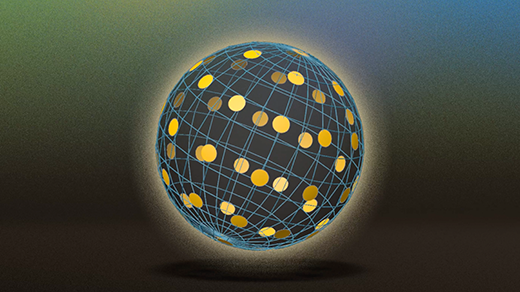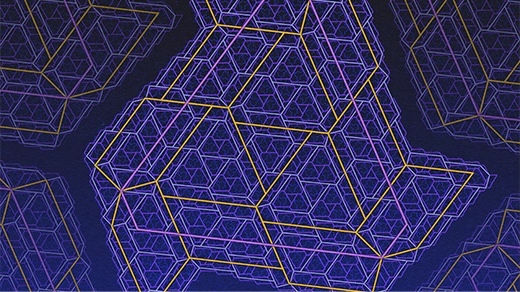What's up in
Algebra
Latest Articles
String Theory Inspires a Brilliant, Baffling New Math Proof
Years ago, an audacious Fields medalist outlined a sweeping program that, he claimed, could be used to resolve a major problem in algebraic geometry. Other mathematicians had their doubts. Now he says he has a proof.
What Are Lie Groups?
By combining the language of groups with that of geometry and linear algebra, Marius Sophus Lie created one of math’s most powerful tools.
New Math Revives Geometry’s Oldest Problems
Using a relatively young theory, a team of mathematicians has started to answer questions whose roots lie at the very beginning of mathematics.
The Largest Sofa You Can Move Around a Corner
A new proof reveals the answer to the decades-old “moving sofa” problem. It highlights how even the simplest optimization problems can have counterintuitive answers.
‘Groups’ Underpin Modern Math. Here’s How They Work.
What do the integers have in common with the symmetries of a triangle? In the 19th century, mathematicians invented groups as an answer to this question.
A Rosetta Stone for Mathematics
In 1940 André Weil wrote a letter to his sister, Simone, outlining his vision for translating between three distinct areas of mathematics. Eighty years later, it still animates many of the most exciting developments in the field.
What Makes for ‘Good’ Mathematics?
Terence Tao, who has been called the “Mozart of Mathematics,” wrote an essay in 2007 about the common ingredients in “good” mathematical research. In this episode, the Fields Medalist joins Steven Strogatz to revisit the topic.
The Year in Math
Landmark results in Ramsey theory and a remarkably simple aperiodic tile capped a year of mathematical delight and discovery.
‘A-Team’ of Math Proves a Critical Link Between Addition and Sets
A team of four prominent mathematicians, including two Fields medalists, proved a conjecture described as a “holy grail of additive combinatorics.”








